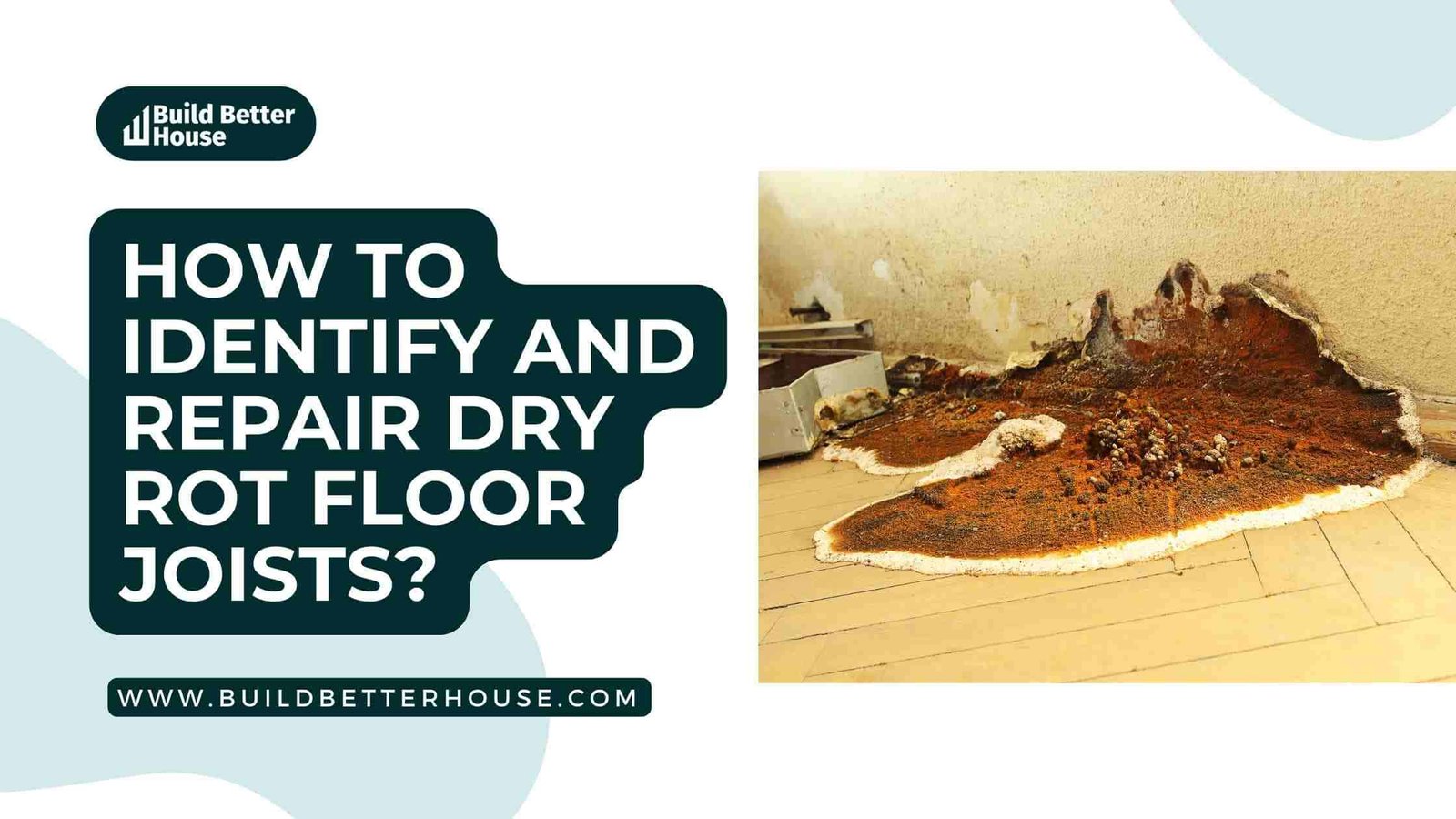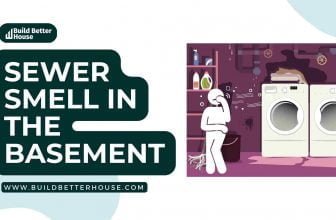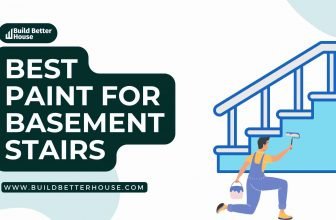How To Identify And Repair Dry Rot Floor Joists?

Dry rot is common in homes and can cause severe structural damage. Dry rot floor joists are vulnerable and can become compromised if not addressed promptly. Identifying and repairing dry rot in floor joists can be challenging.
This article will outline how to identify and fix dry rot floor joists to protect your home from further damage and ensure a safe, secure living environment.
What is dry rot?
Dry rot is a type of wood rot caused by fungi. Several species cause wood rot, but two of the most common types are white and brown rot. Dry rot floor joists are a severe issue for homeowners because the fungi can travel through the wood structure, causing significant damage and weakening the system.
Dry rot is also known as dry wood rot, timber rot, and house rot. Wood rot caused by water is generally easier to spot; dry rot can be much more challenging to identify because its color and texture are similar to healthy wood.
While dry rot can occur in any part of the home, it is prevalent in roof afters and floor joists since these areas have significant moisture content. If left untreated, dry rot can quickly spread to other home areas, compromising the structure and posing a severe safety hazard.
Signs of dry rot floor joists
Keep an eye out for dry rot floor joists, which display yellowing, cracking, warping, and a musty odor. Address the matter as soon as possible to make your life easy.
- Rotting wood and wood decay– The most common signs of dry rot on floor joists are rotting wood and wood decay. You may notice discoloration or darkening of wood, often accompanied by a musty smell.
- Dried-out wood – This may crumble or break apart when you try to cut or break it.
- Cracked or warped boards – In some cases, dry rot can cause the wood to warp, creating a raised surface. This can be dangerous if you have wooden flooring, as it may cause boards to become loose and break.
- Sagging in the floor – If you notice a sudden drop in the level of your floor, this may be a sign of dry rot.
- The area behind the floor is moist – You may be able to detect moisture behind the floor by using a moisture meter.
- Slipping in the floor or stairs – If floor joists are decayed, they may be less sturdy, making walking on the floor less secure.
By doing routine checks, you can avoid or address these issues sooner. So make a point of checking in at least once a week.
Determining the extent of the damage
Identifying the extent of the damage is an important step in the damage repair procedure. You can do this by evaluating a few things:
The extent of the dry rot: You can determine how far the dry rot has progressed by removing any visible decayed wood and inspecting the remaining wood for signs of dry rot.
The joist’s condition: You can also examine the shape of the joist to determine if it needs replacement. If the joist is significantly decayed, it should replace.
How to repair dry rot floor joists?
After identifying and diagnosing the dry rot in your floor joists, you can begin repairing the damage.
If the damage is localized, you can utilize various techniques to improve the dry rot. Or If the damage is more severe, you may need to replace the joist altogether.
Learning how to fix dry rot floor joists can help your repair when dealing with dry rot. Here are a few repair ways to consider:
Apply Penetrating Sealer
Applying a penetrating sealer to the affected area can help to prevent additional moisture from seeping into the joist and prolong the life of the repair.
If the damage is localized, this can be a very effective and efficient way to repair the damage.
Fill the damaged area
If the crack extends through the entire joist, you can fill the damaged area with a dry rot-resistant filler. You can also fill the damaged area with non-toxic epoxy to seal the wood and prevent further damage.
- Liquid sealants
These sealants range in consistency and are typically applied to the exterior of the wood. Like – Silicon Sealant creates a chemical barrier between the wood and the moisture, which prevents additional damage. The sealants are generally effective, but they are not permanent repairs.
- Wood filler
Wood filler is a standard treatment for dry rot. It is ideal for smaller areas of damage and can be applied in various ways.
The methods listed above are simple DIY activities you can complete without hiring an expert. They are efficient and will address the issue quickly and make it rot-free.
Actions To Take While Repairing Dry Rot Floor Joists
If you have dry rot in your home, you must cure the dry rot as quickly as possible. Ignoring a dry rot problem might result in severe structural damage to your property.
The following are some actions to take while repairing dry rot floor joists:
- To identify the amount of damage, inspect the dry rot. Look for signs of moisture seeping into dry wood, fungus growth, or physical symptoms like sponginess or chalky residue.
- Remove any visibly damaged, dry rotting material. This could comprise pieces of floor joists, roof sheathing, or subflooring.
- Remove any dry rotted material that is not structurally sound. If a dry rot problem has gone unnoticed for a long time, there may be dry-rotted parts of floor joists or roof sheathing beneath the dry-rotted material.
- Replace any dry rot with new dry wood that shows no symptoms of dry rot. This will ensure that the structure of your home remains intact and does not suffer further harm from dry rot in the future.
- Install basement waterproofing to prevent the wood from rotting.
Following these helpful procedures while fixing dry rot floor free will undoubtedly help you in the long term.
Tips for preventing dry rot damage to your home
Well, with the proper knowledge and some simple maintenance, you can protect your home from dry rot’s costly and destructive effects. Here are some tips for preventing dry rot damage to your home.
- Dry rot can avoid if dry wood is kept dry. It is critical only to let dry wood sit for extended periods with protection, such as paint or primer, to help avoid dry rot in the first place.
- Maintain constant moisture protection for dry rotting material. Even if you have eliminated most of the dry rot, minor parts may require additional protection from moisture seeping in and causing further damage over time.
Protect these areas with a protective covering, such as paint or primer, until they are totally dry before removing any additional dry rotting debris.
- Dry rot is a severe issue that can cause significant damage to your home. Floor joists are frequently the first point of contact. Detecting and fixing dry rot floor joists as soon as feasible is critical to protecting your home’s structural integrity.
You don’t need to go any further if you take good care of your home and furniture; you may avoid problems by maintaining them and ensuring they work correctly.
Professional dry rot repair services
If the damage is extensive enough, you may need to replace the floor joist. While it’s possible to replace the joist yourself, it can be a very labor-intensive and challenging task. Hiring a professional service can be good if you need help handling the repairs yourself.
The repair cost largely depends on the extent of the damage, the type of treatment used, and the materials required for the repair.
Repairing dry rot can be costly, but it’s important to remember that failing to address the problem will only lead to more expensive repairs.
Cost of repairing dry rot in floor joists
The cost of repairing dry rot in joists can vary significantly depending on the extent of the damage and the materials required for the repair. However, if you need to replace the entire joist, it can be very costly and labor-intensive.
Preventing dry rot is much more effective and cost-efficient than repairing it. While it’s impossible to avoid all instances of dry rot altogether, there are several steps you can take to reduce your risk, which include: keeping the surrounding areas of your home dry, maintaining your home’s humidity levels at an appropriate level, reducing the amount of ventilation in the affected areas, and cleaning and repairing any damage.
Summing up
Dry rot is a dangerous and destructive problem in any area exposed to high moisture levels. While it is a prevalent problem, it is also preventable.
Preventing dry rot requires maintenance and vigilance, but the benefits outweigh the costs. If you notice any dry rot in your home, it’s essential to address the problem as soon as possible to avoid further damage.
FAQs about dry rot floor joists
1. How do I know if dry rot compromised my joists?
If you notice signs of dry rot in your floor joists, it’s essential to act quickly. – Look for any signs of decayed wood, powdery textures, or rotten odors.
2. What areas of my home are most at risk for dry rot?
Dry rot can occur anywhere there is excess moisture and insufficient ventilation, such as your home’s floor joists, the soil beneath your home, and the exterior of your property.
3. How can I prevent future dry rot issues?
You can take several steps to prevent dry rot from occurring in your home. Keep the surrounding areas of your home dry – This includes both the exterior and the interior of your home.
Keep your home’s humidity levels at an appropriate level – Ideally, your home’s humidity levels should be between 30-60%.
Read more:
Top 4 Boat Sump Pumps In 2023 & How To Install Them
7 Best Hot Water Recirculating Pumps in 2023: Tested & Compared
Fluidmaster vs Korky: Which Toilet Replacement Is The Best?
How To Remove Hose From Spigot In 4 Simple Steps
Does Your Sump Pump Leaks Oil? Here’s How To Fix It






